Normal ladders are usually used to climb from one level to another. In many countries, “real work” from a ladder is not allowed unless it has some stable and safe platforms etc. However, bigger maintenance ladders can be used for light construction work, repairs and maintenance tasks like window cleaning especially if the ladders are traversing i.e. moving horizontally along the facade or glass roof.
Permanently installed maintenance ladders moving along the facade or a glass roof make it easy to access them for the regular cleaning and maintenance. To access different surfaces, different ladder applications are needed. The most common types of ladders used for facade and glass roof access are vertical ladders, inclined ladders, box ladders and a special version, mostly called mast climbers.
Vertical maintenance ladders
Vertical ladders look almost the same as normal carry-along ladders, the only difference is that they are built much stronger and meant to access the facade, not only climb to the roof. The ladder has trolleys that are attached to an aluminium track which is mounted in front of the facade or on the roof. The ladder moves easily and safely along the track, even if there is a person on the ladder. The ladder can be moved with a motorized, rope driven or manual trolley. In order to safely reach the facade the ladders usually have foldable platforms to work from. A fall arrest safety system is always needed. Another option is to have a moving basket running up and down the ladder. The basket provides a particularly safe working place and is moved by a manual winch.
For best efficiency, the ladders should not be used for too high facades. Climbing up and down the ladder takes time and is tiring for the people cleaning the facade. The recommended maximum height for vertical maintenance ladders used for facade access is around 12 meters. For higher facades a monorail solution, a light roof trolley or davit system is much more suitable.
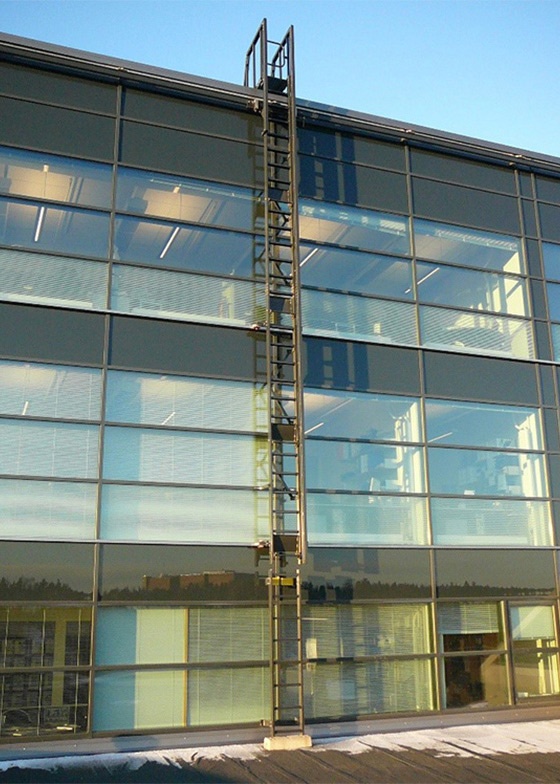 |
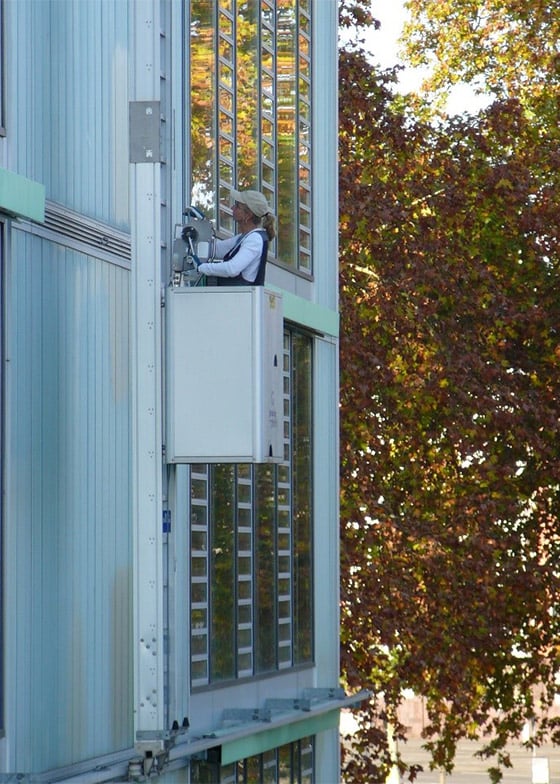 |
| Vertical ladder with foldable platforms | Vertical ladder with a moving basket – Basket ladder |
Inclined ladders
Inclined maintenance ladders are like vertical ladders, laid over a glass roof. Inclined ladders always have proper steps rather than small rungs. Maintaining and cleaning glass roofs can be a difficult job. The glass roof is mostly not strong enough to support people on top of it, the roof is very slippery especially when wet and it can easily get scratched. Therefore, a working platform on top of the roof is needed. The inclined ladder is travelling on top of aluminium tracks, so it can be easily moved over the glass roof. Cleaning the glass roof will become easy, safe and efficient.
Bigger inclined ladders can be very similar to gantries. In simple terms, the difference between a gantry and a ladder is that you walk along a gantry and you climb up a ladder, using also your hands. Ladders have small rungs or steps to stand on and the steps are non-overlapping. The gantries however have closed floor or overlapping steps.
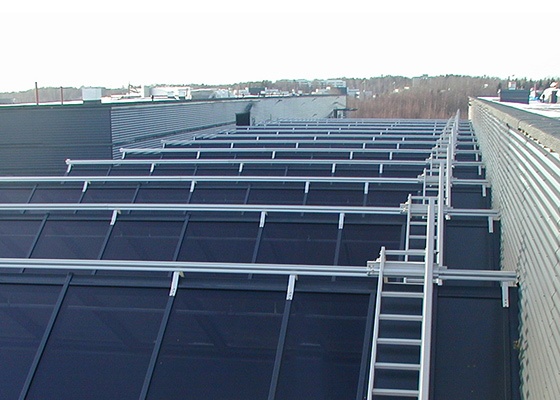 |
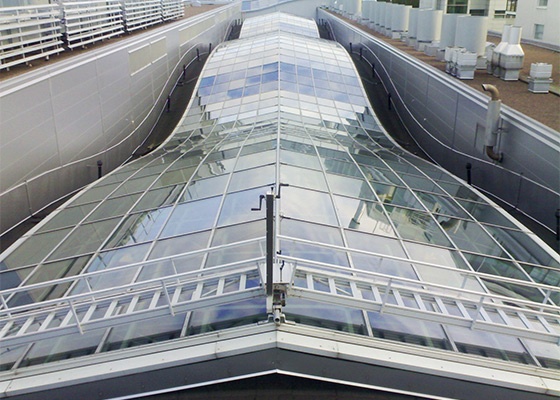 |
| Manually moved inclined ladders | Hand crank trolley used to move an inclined ladder |
Box ladders
The box ladder is the biggest version of a permanently installed maintenance ladder. It is a cuboid (box) shaped ladder where the person can safely climb inside. The main benefit of a box ladder compared to normal vertical ladders is that it provides a bigger and safer working space for cleaning and maintenance of windows and other facades. One of the most used places for a box ladders are flight control towers. The box ladder is ideal for safe access to the “negatively” inclined facades of the flight control tower. Another use for a box ladder is if there are different heights of a facade on one building. The box ladder can have a telescopic top part to reach the higher parts.
The box ladder is also moving along aluminium tracks mounted on the roof or in front of the facade. It can traverse with manual, rope driven or motorized trolleys. As with smaller ladders, the box ladder shouldn’t be too high as the people need to climb up and down the ladder when cleaning and maintaining the facade. The box ladder is a permanent solution, so attention needs to be paid to hide it when not in use. Therefore, for visible vertical facades the monorail solution, roof trolleys or the mast climber would be better and even more efficient alternatives.
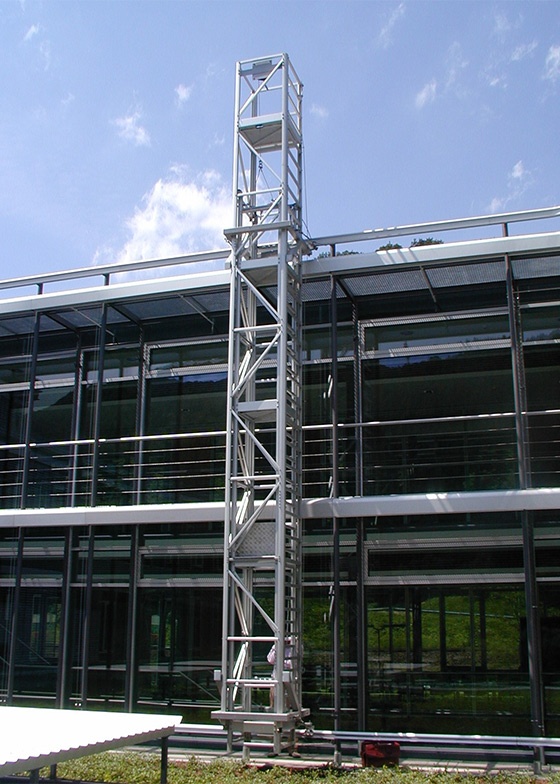 |
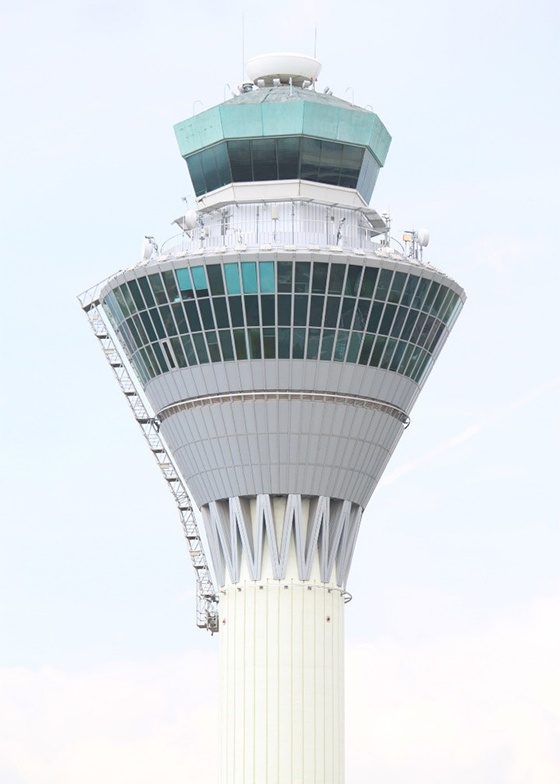 |
| Box ladder with extended top part | Box ladder on flight control tower |
Mast climbers
The mast climber is exactly as it sounds like. There is a horizontally moving mast on a facade with climbing platform attached to it. The mast climber is different from the other ladders and it can be argued if it is a ladder at all. Compared to a box ladder the mast climber is less visible as the platform can be stored away and only the small mast is left visible. Also for the people cleaning and maintaining the windows it is better as there is no need to climb, the platform is motorized and moves without any extra effort.
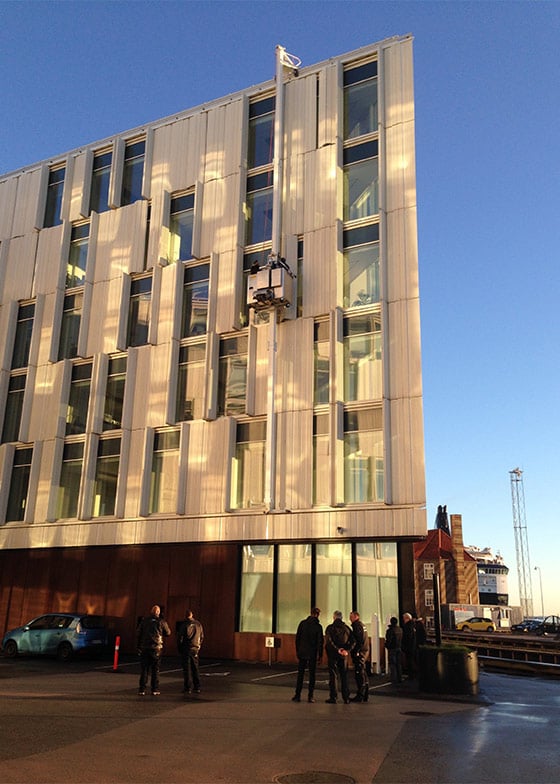 |
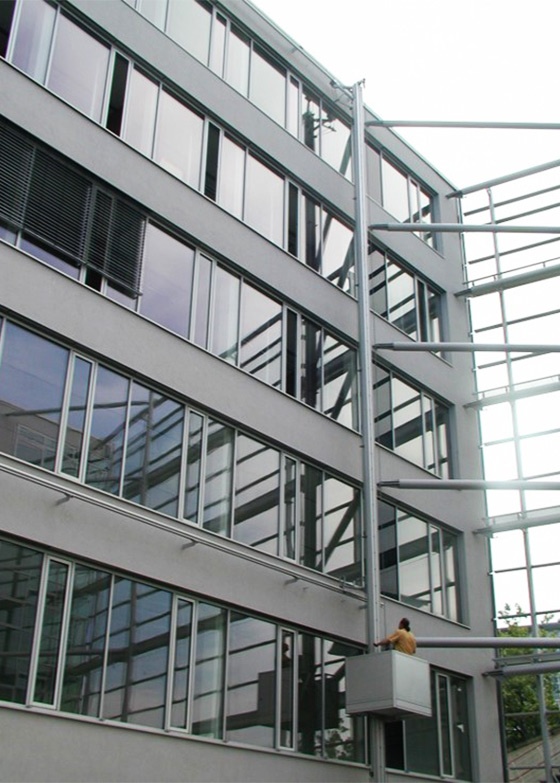 |
| Box ladder replaced by a mast climber | Mast climber on typical facade |
Do you need an access system for facades or glass roofs of your building? Read more about the different facade access solutions or contact Rostek and our experienced designers will find the best solution for the building. For more details, download the traversing ladders datasheet from below.


